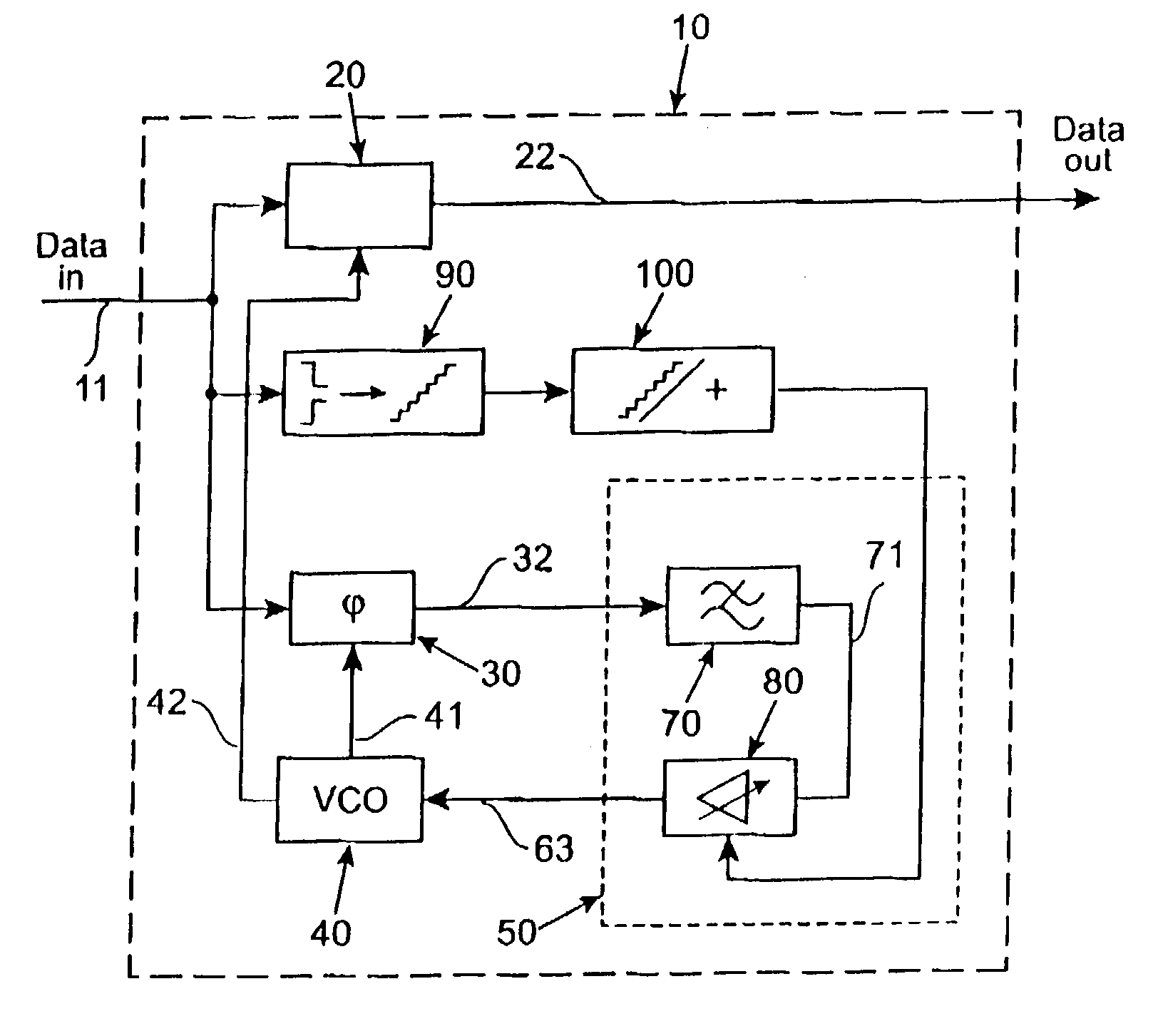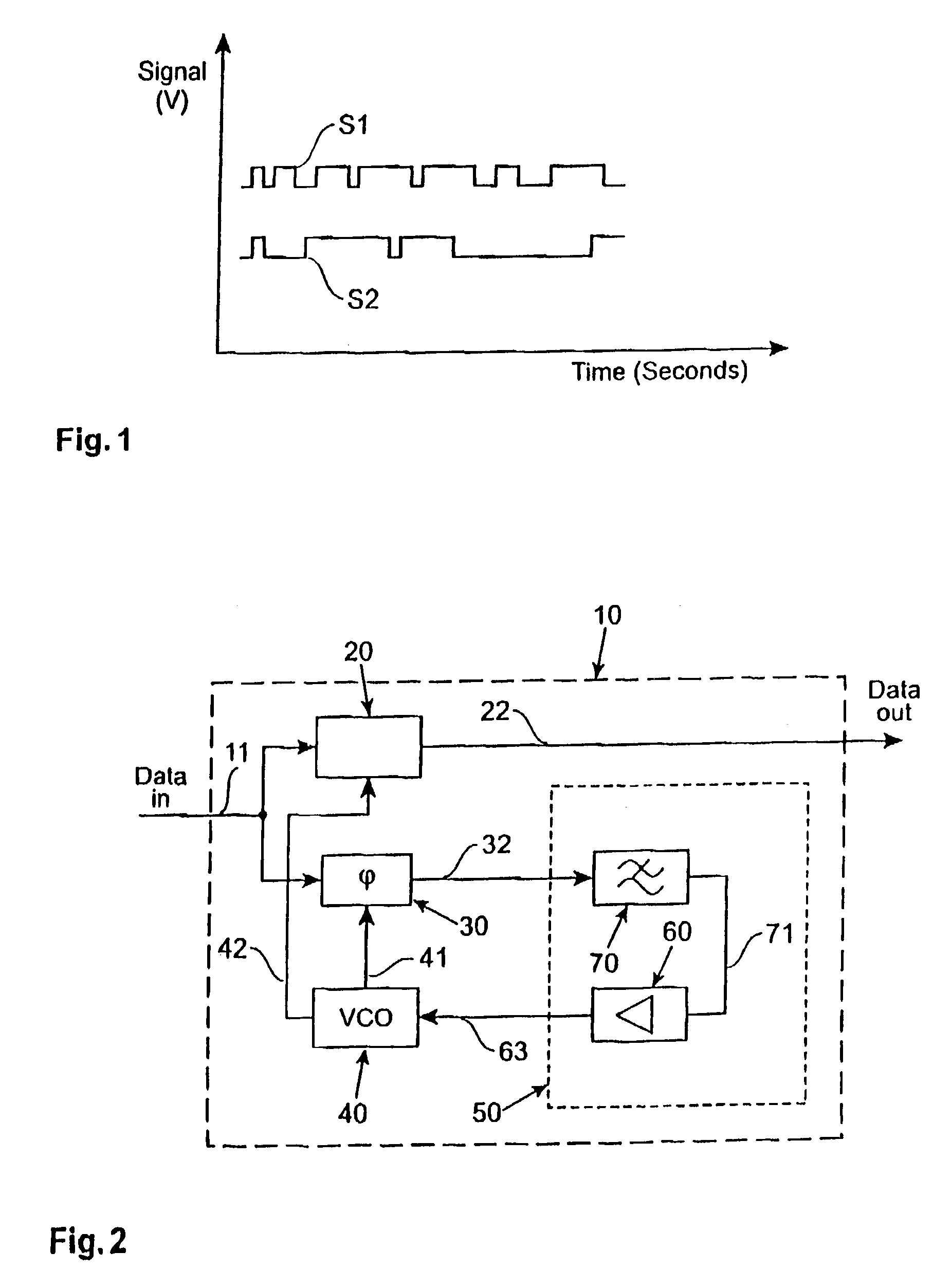Clock data recovery system
a clock data and clock generator technology, applied in the field of clock data recovery system, can solve the problems of insufficient accuracy of resampled clock related to the incoming data signal stream, varying the gain and bandwidth of the clock data recovery system loop, and not being well predicted, so as to increase the loop bandwidth and the increment of clock generators. the effect of small, fast loop bandwidth
- Summary
- Abstract
- Description
- Claims
- Application Information
AI Technical Summary
Benefits of technology
Problems solved by technology
Method used
Image
Examples
Embodiment Construction
[0025]During the serial transmission of random data streams the number of data transitions from one to zero and zero to one respectively are not constant when counted over a given number of transmitted bits. This results in a variation of the bit transition density of the data signal stream. In FIG. 1 two different data signal streams are depicted. A first data signal stream S1 shows a data signal that has a larger bit transition density than a second data signal stream S2. Both data signal streams S1, S2 provide the same number of transmitted bits per time period although in the second data signal stream S2 more non-changing bits in a row occur than in the first data signal S1. For both data signal streams S1, S2 a clock data recovery system is resampling a clock signal with the same frequency.
[0026]These different types of signal data streams result from the type of line code that is used. Typical line codes may be e.g. 8B10B, scrambling, 10 Gb Ethernet etc. The different type of ...
PUM
 Login to View More
Login to View More Abstract
Description
Claims
Application Information
 Login to View More
Login to View More - R&D
- Intellectual Property
- Life Sciences
- Materials
- Tech Scout
- Unparalleled Data Quality
- Higher Quality Content
- 60% Fewer Hallucinations
Browse by: Latest US Patents, China's latest patents, Technical Efficacy Thesaurus, Application Domain, Technology Topic, Popular Technical Reports.
© 2025 PatSnap. All rights reserved.Legal|Privacy policy|Modern Slavery Act Transparency Statement|Sitemap|About US| Contact US: help@patsnap.com



